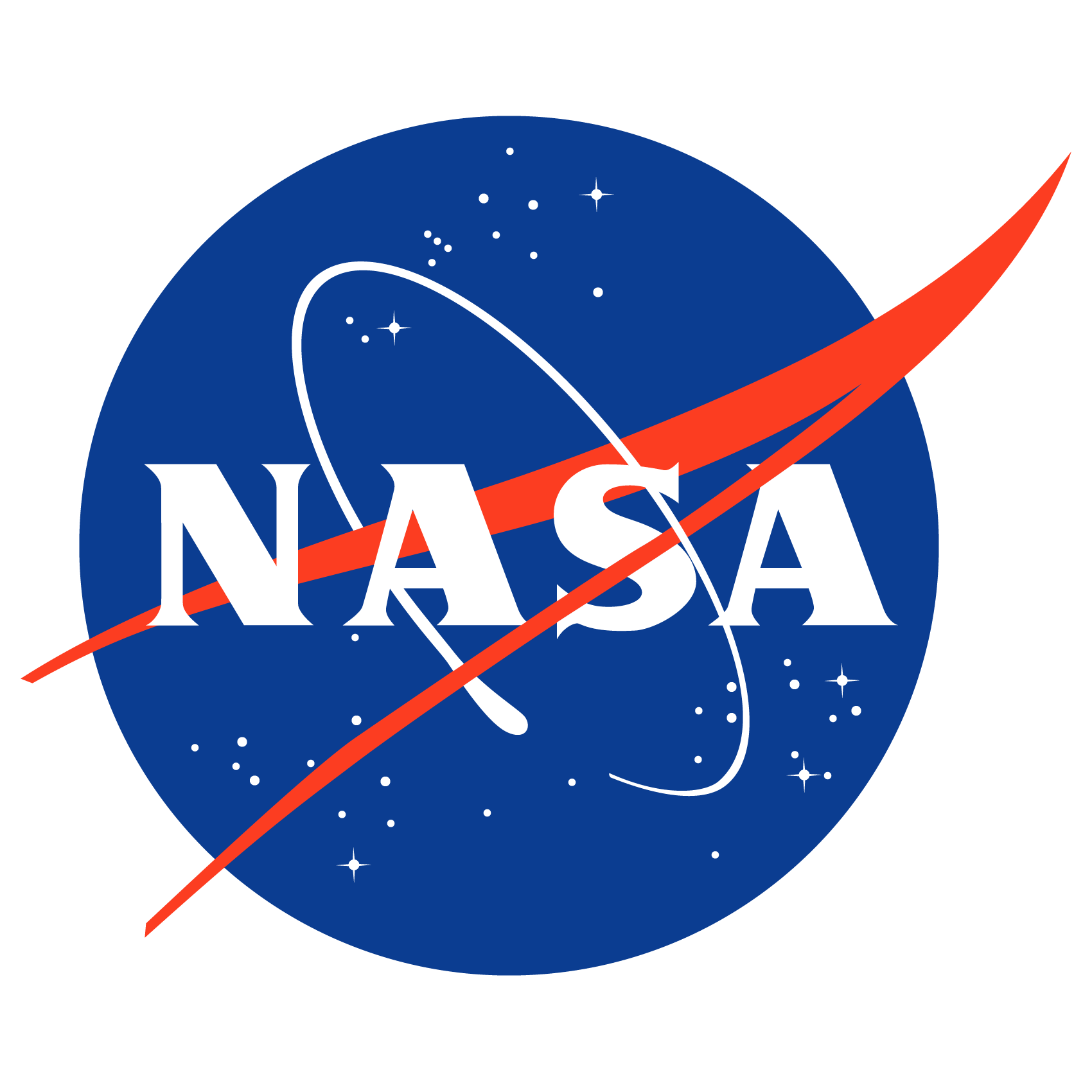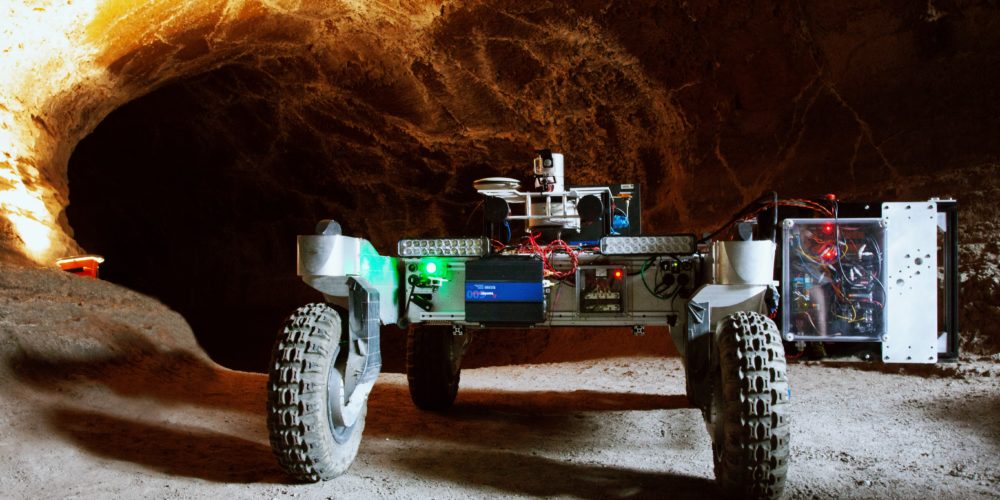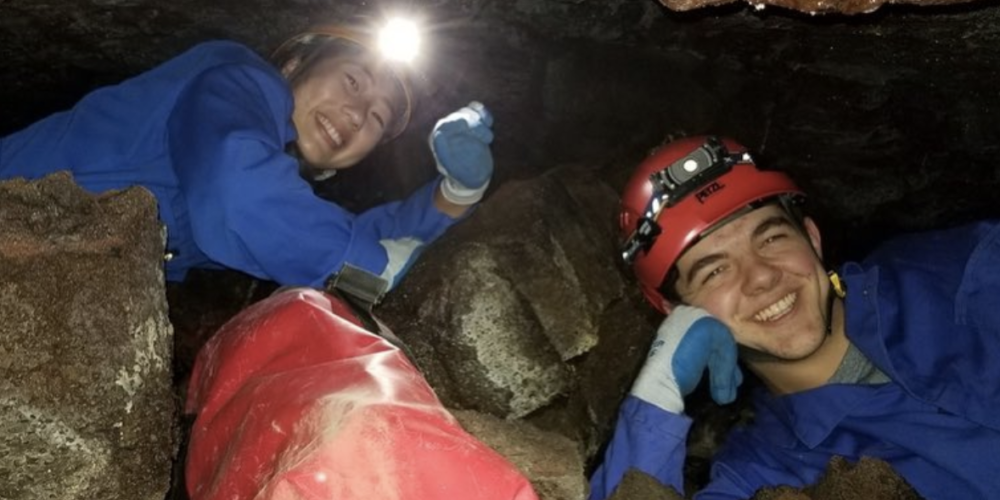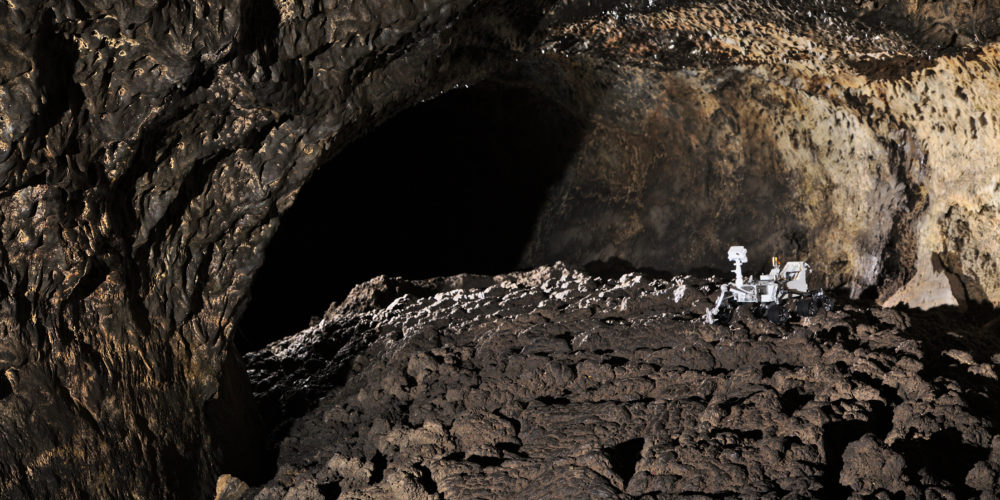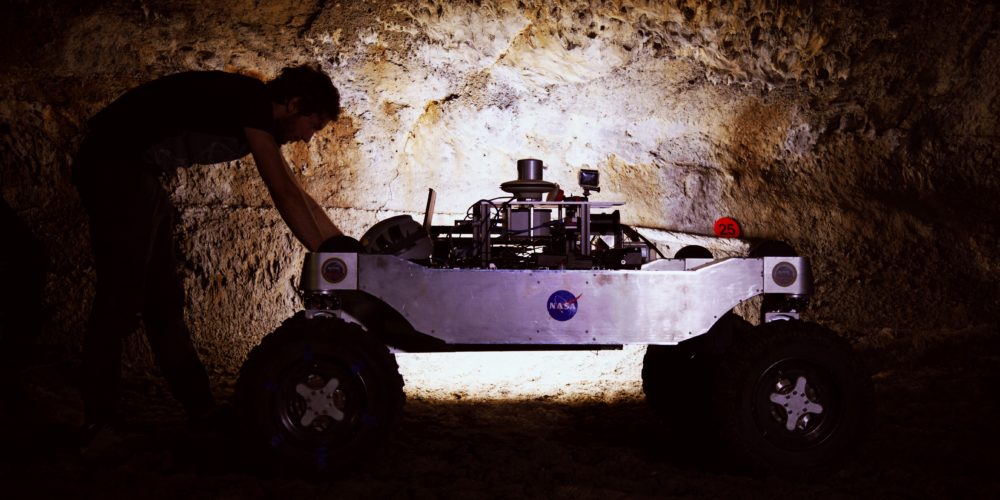Lava tubes are caves formed from cooled lava. Magma begins to cool once it reaches the surface and flows downhill. Molten lava continues to flows under the hardened crust forming the wall, ceiling, and floor of the tubes.
The BRAILLE team proposed that lava cave tubes are the best terrestrial analog for a key astrobiological target of rocky planets (Léveillé and Datta, 2010; Whittaker, 2012). Lava tube caves have been identified on the Moon and Mars using satellite imagery (e.g., Haruyama et al., 2009; Cushing et al., 2007) and their restricted connection to the surface may create potential for the retention of water (e.g., Williams et al., 2010), a requirement for living systems as we know them.
Lava Beds National Monument (“LABE”) the highest concentration of LTCs in the Continental U.S., with >780 identified tubes and >50 km of total length (Donnelly-Nolan et al., 2008; Waters et al., 1990). Deep caves are often characterized by stable environmental conditions that reflect the mean annual surface temperatures in the region (Wigley & Brown, 1976; Badino, 2010), typically 10-13°C at LABE; however, in some caves, cold air sinks and becomes trapped in blind passages, maintaining perennial ice, often thousands of years old (e.g., Halliday, 1954).
References:
Cushing, G. E., T. N. Titus, J. J. Wynne, and P. R. Christensen (2007) Themis Observes Possible CavesSkylights on Mars. Lunar & Planetary Science Conference 38:1371.
Donnelly-Nolan, J.M. (2006) Chemical analyses and K-Ar ages of samples from 13 drill holes,Medicine Lake volcano, California. U.S.G.S. Bulletin, 2006-1041.
Halliday, W.R. (1954) Ice caves of the United States, National Speleological Society Bulletin 16:3- 28.
Haruyama, J., K. Hioki, M. Shirao, T. Morota, H. Hiesinger, C.H. van der Bogert, H. Miyamoto, A.Iwasaki, Y. Yokota, M. Ohtake, T. Matsunaga, S. Hara, S. Nakanotani, and C.M. Pieters (2009) Possible lunar lava tube skylight observed
Léveillé, R.J. and S. Datta (2010) Lava tubes and basaltic caves as astrobiological targets on Earth and Mars: A review, Planetary and Space Sciences 58:592-598.
Waters, A.C., J.M. Donnelly-Nolan and B.W. Rogers (1990) Selected caves and lava tubes in andnear Lava Beds National Monument, California, USGS Bulletin 1673, 102 pp.
Whittaker, W., 2012. Technologies enabling exploration of skylights, lava tubes and caves. NASA,US, Report, no. NNX11AR42G.
Wigley, T. M. L., and M. C. Brown (1976) “Cave meteorology”, in: The Science of Speleology,Academic Press, New York, p. 329-344.
Williams, K.E., C.P. McKay, O.B. Toon, J.W. Head (2010) Do ice caves exist on Mars? Icarus, doi:10.1016/j.icarus.2010.03.039.
